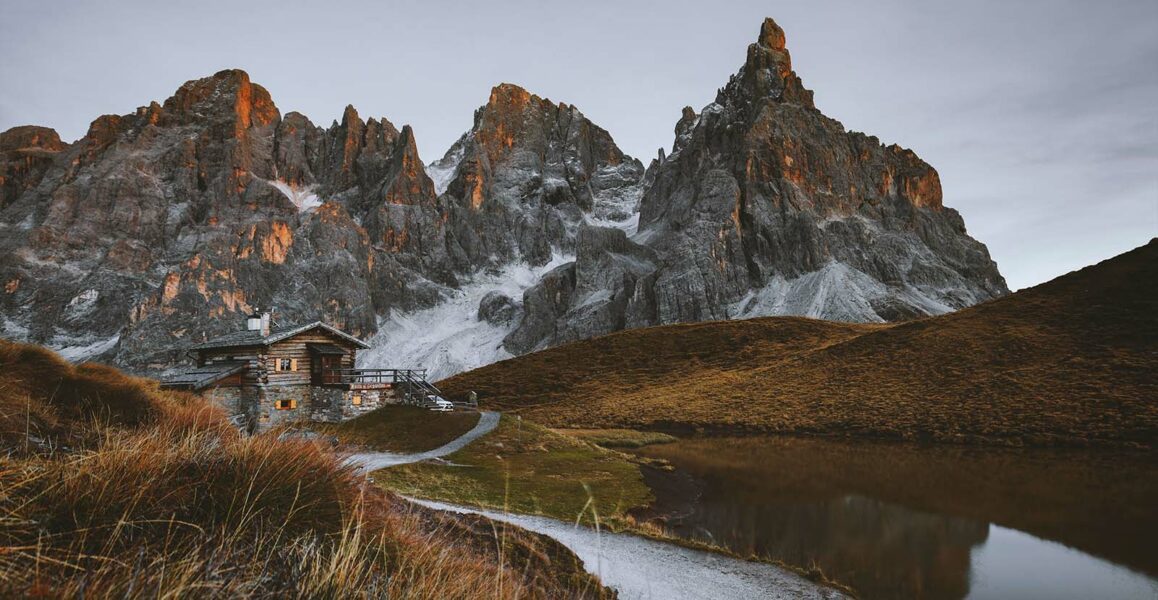When in the outdoors, there are many things you have to be prepared for. Among them, if not a top priority, is having a place to rest and sleep for your trip. As you already know, there is a large variety of options, from a small tent to a lux RV, for weekend activities, but what happens if an unexpected event surprises you and you’re left without shelter? It would help if you had a backup plan, which in this scenario means being able to build a survival shelter on your own.
In today’s article, we’ll try to explain how to build a long-term shelter for camping uses so you’re never caught off guard by any occurring situation. Learning to depend on the environment around us will help us find hands-on supplies and easily assemble our temporary home. The first piece of advice we can give you is to allow yourself to think on the spot and improvise if needed considering everyone’s conditions might be different.
Today’s little mission is to teach you how to build a survival shelter and answer as many questions as we can regarding the subject.
The purpose of a shelter is to protect you from the elements while keeping you warm and comfortable. Don’t spend your time and effort building a flimsy cover that won’t protect you from wind and rain. Making a shelter takes some knowledge and research. Still, we hope that after reading this article, you’ll be fully prepared to build yourself a proper shelter that is comfortable and secure.
The Most Popular Types Of Shelters
When it comes down to building long-term survival shelters, there are several options to choose from. Depending on the situation and place, some will suit you better than others. The list of shelters we’ve put together has significant differences, but all of them are incredibly efficient. That’s why it’s great to understand every advantage and disadvantage, so you know which shelter will best suit your specific needs.
1. Lean-To Survival Shelter
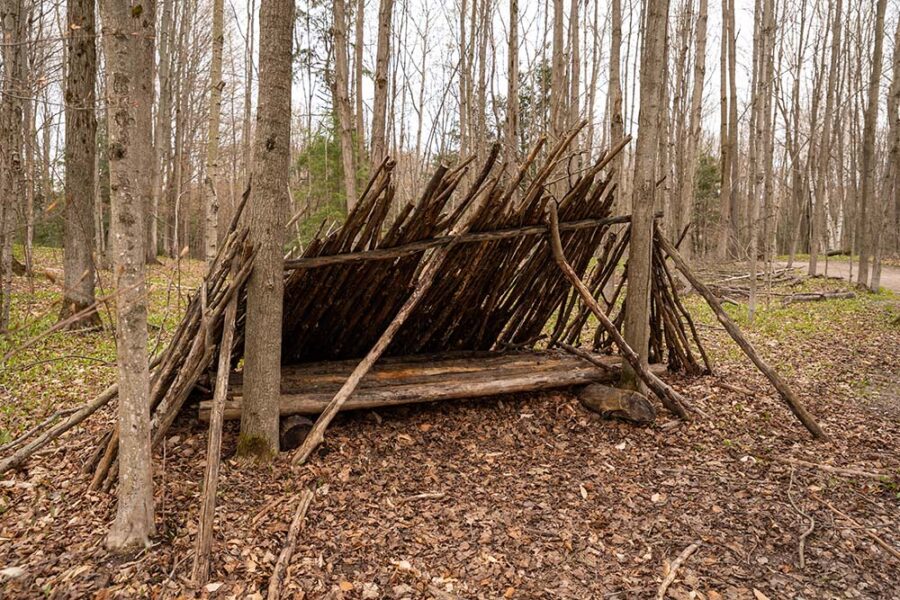
The lean-to shelter has been one of the most popular long-term covers because it’s simple and doesn’t need a lot of energy to build. It would help if you started by finding two sturdy trees that are close to each other because they will be serving as the foundation you’ll be building on. Next on your to-do list should be locating a thick piece of wood that you need to tie to the two trees parallel to the ground.
If possible, you can build a floor from long, thin wood sticks on top of larger ones so you stay dry and clean. Last but not least is constructing the roof by taking a bunch of long sticks and leaning them at a 45 ° angle against the beam you’ve already tied to the two trees.
After that, all you have to do is cover it with lots of leaves and vegetation, which will prevent water from coming in. If you want to be sure that your shelter will hold up, using some paracord to tie everything together will make it even sturdier and very effective in the long run.
2. Teepee
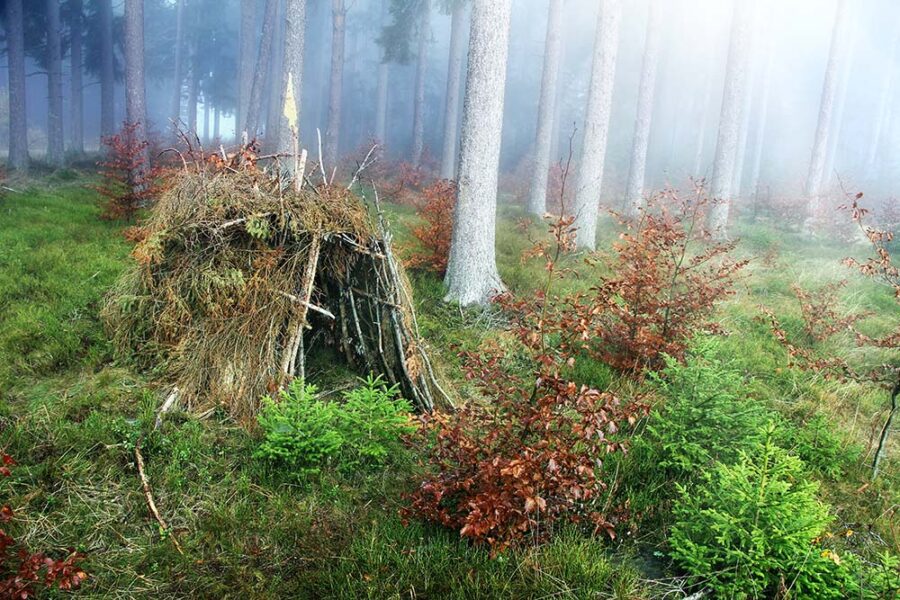
Teepees are another popular long-term shelter option, which has been used by people for thousands of years. If you want to create a long-term cover, you have to put more effort into it and its foundation so it doesn’t fall apart easily. What you need are three long sticks that you have to tie together at the top, which will serve as our base. Next, you have to find three more sticks, this time, they need to be smaller.
Tie them up along each side of the formed pyramid to reinforce your shelter and provide security. After that comes the easy part, which is to lay a lot of large sticks along a flat surface on each side until you’ve fully covered it. All that’s left to do after is to throw some leaves and debris on top so that you can stay dry in the event of a storm.
3. Tarp Survival Shelters
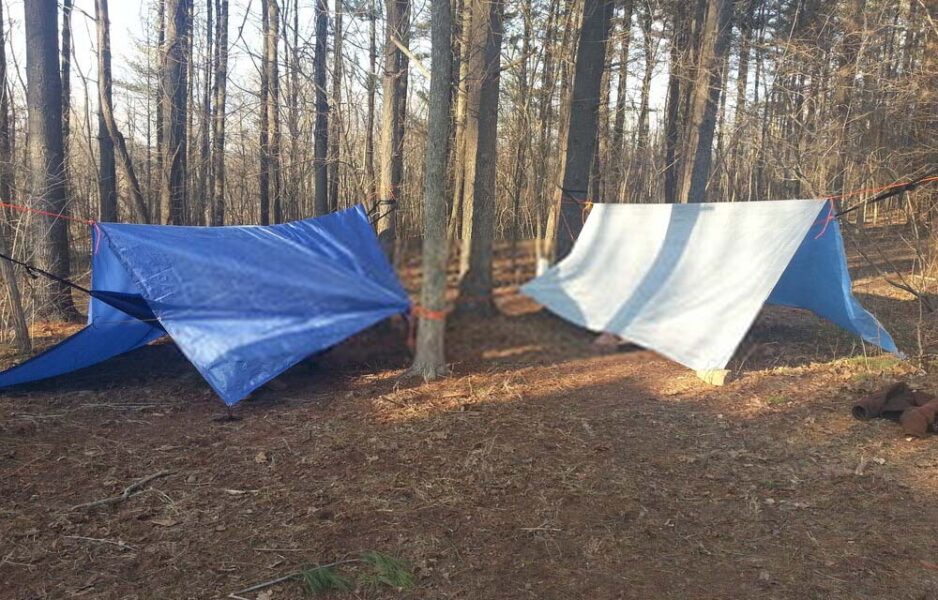
The tarp is one of the favorite items for most survivalists because, with it, you can build an immense number of shelters. You can use this strong and durable material to cover a lean-to or a teepee instead of using leaves and vegetation, saving you a lot of time. There are a million other options to choose from because building a long-term cover from a tarp can be very easy and useful.
The tarp can be used to build your own survival compound in the wilderness with the help of wood so that you create a strong foundation to lean on. Having a tarp with you in the wilderness will always do you good and prepare you for many situations.
3. Snow Fort Quinzhee
Building a quinzhee might save your life if you ever find yourself without shelter in a snowy environment. Something to keep in mind is that the quinzhee is a pile of snow, and it can be a long-term shelter only in cold weather conditions. First, you must build a big mound of snow, which is large enough to fit you in a lying position. After you’ve made it, give it an hour or two to set and harden.
When the time has passed, you are going to dig out the center, and afterward, dig the opening a bit lower than the floor area where you’ll be sleeping and then up into the main space a bit before leveling off. However, you have to be mindful of the thickness of the walls since thin ones might not hold up. To stay warm inside, you can drag some leaves and vegetation and use them as flooring.
Where to build a survival shelter?
There are several things you should consider before choosing a place to build a long-term shelter since they can significantly improve your chances of survival in the wilderness. As we all know, water is a vital element for our well-being, and that’s why you should make sure you have a water source nearby.
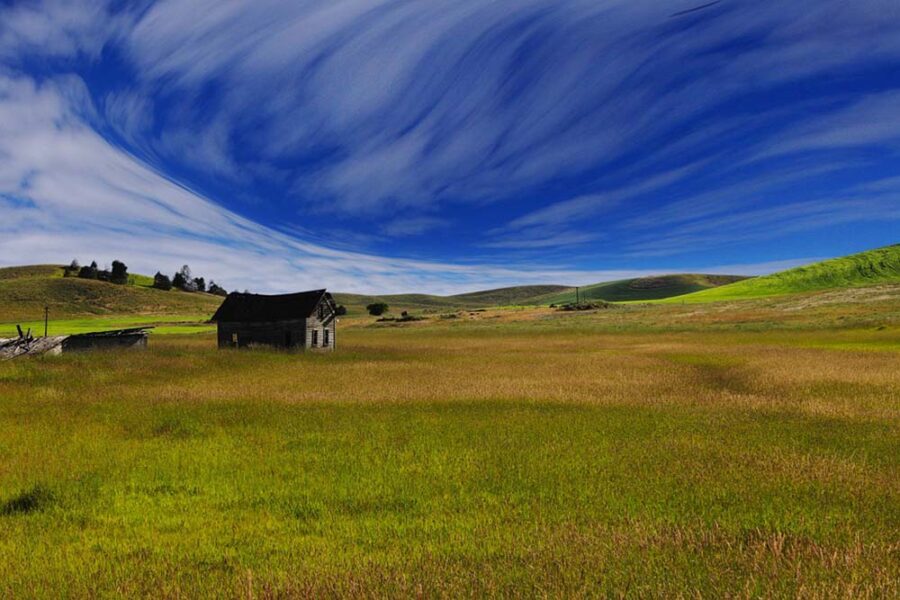
Take your time to decide on a place, especially since you have to consider its exposure to the elements. Position your shelter in an area that won’t put you in danger because of loose rocks or flood zones. No one wants water or smoke inside their temporary home, so you should carefully assess your surroundings.
Fire is what keeps you warm in the outdoors, and that’s why you should pick an area that has enough fuel around so you don’t waste all your energy on looking for some. If a natural disaster occurs or an unexpected situation happens, that means you are living in the wilderness for an extended period, you should think about food supply as well. What we mean by that is that you should be looking for water sources that are big enough to have fish in them.
Your ideal option would be settling down near fast-moving water so that you get the best chances of survival. Lastly, we have to talk about the bathroom situation. When picking a spot, it should be at least 100 feet away from your shelter so that your water stays clean and the attracted insects don’t ruin your food.
All of these elements are crucial for your survival. If you follow them, you can survive for longer, and your whole experience will be a lot more comfortable and secure.
What are the 7 priorities for survival?
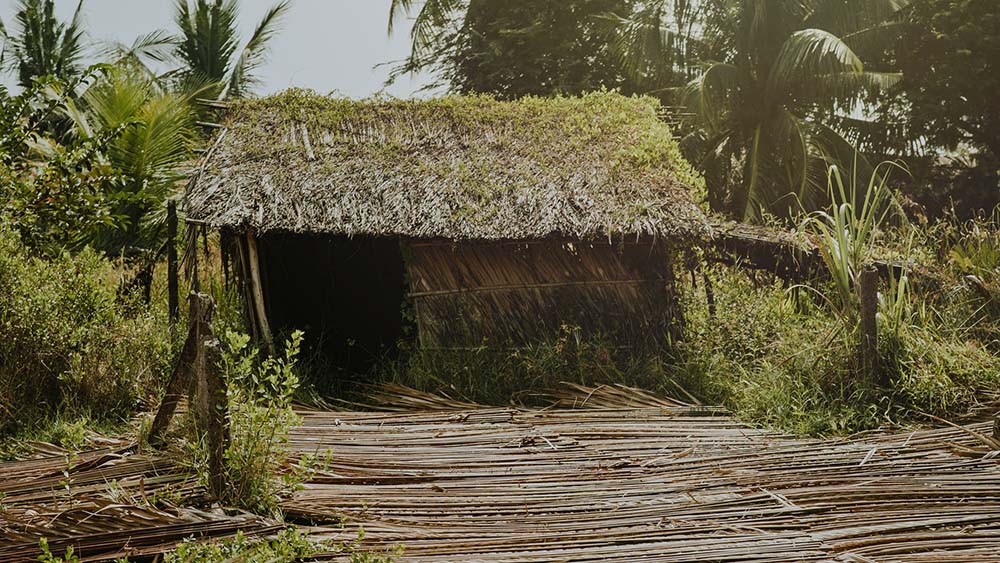
If you ever find yourself in the wilderness when something goes wrong, there are seven priorities for survival that you should follow. First, you should STOP and take a breath, give yourself some time, and assess your surroundings. Find resources around you and take care of any first-aid that needs attending. After that, it’s time to seek shelter since your body temperature is the key to your survival.
Find cover or build a shelter to avoid rain, snow, cold, or heat because that is crucial for your health. The next priority is to build a fire, especially if you are in a colder area. In the long run, fire can be the one thing that saves you since you need it to keep your body warm. Not only that, but you can use them to boil water and purify it and even signal for help.
Every minute matters, so you should somehow signal your whereabouts, and the universal way to do so is to do anything three times. Shouting three times, whistling, or shooting a gun all will be considered an S.O.S distress call. Even though this might seem like an obvious thing to do, you should never forget to drink water because you can survive without food for days, but that’s not the case with liquids.
If you don’t have water on you, try and find a source that will provide you with some. With that said, please don’t drink it before you boil it or purify it first. All that’s left after is food, don’t worry about it because even if your body doesn’t like it, you can survive without it for a while. If you have some food on you but don’t know how long you will be in this situation, you should ration the food to last longer.
Don’t freak out, and follow these priorities because they will keep you alive!
How do you build a survival shelter?
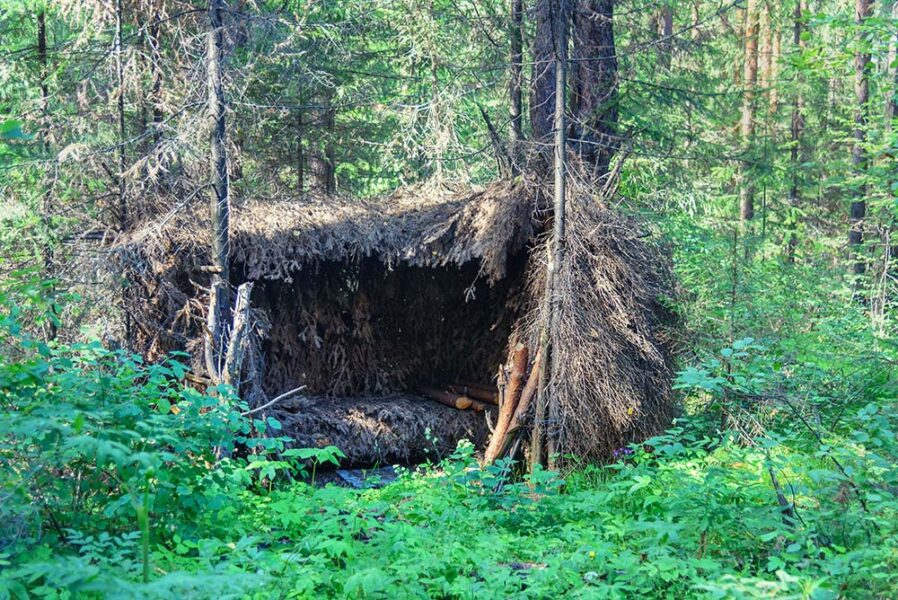
Finding yourself in the wilderness with the need to build a shelter, in most cases, will mean using stuff you find, like leaves, sticks, branches, and others. All these things might be enough to build you a cover, but having some tools on you will help the process and, in the long run, save your life.
Those must-have items are a paracord, a tarp, a multi-tool, lighter, heavy-duty gloves, a bivy sack, a shovel, and a hatchet. Don’t forget to test all these tools before you go into the wild, and make sure to keep your backpack’s weight as light as possible.
Firstly you should pick the right location to build your survival shelter. Stay close to a water source but never pick a spot with lower grounds because a harsh downpour can destroy your cover. Higher grounds aren’t much better either, considering that winds can be pretty heavy, the only available option left is flat ground. That’s the most logical place when we’re talking about the elements and how harmful they can be.
Next, it’s time to figure out what you need and require to survive in a long-term shelter. Think of the size of the shelter, if you’re not alone, keep in mind the weather and your surroundings. Don’t be careless and consider the possibility of fire not only outside but inside your cover as well if you are in a colder area, and don’t risk exposing your body to hypothermia.
After you’ve been taught what you need and how to get it, it’s time for you to decide what type of shelter you want to build, in the questions above, we’ve talked about different types of survival shelters and how to build them. Choose something that will suit your needs accurately, and don’t waste time and effort on something you can’t make. Building a long-term cover might be tricky and not as comfortable as a house, but if appropriately done in case of an emergency, it will save your life.
How do you preserve a long-term shelter?
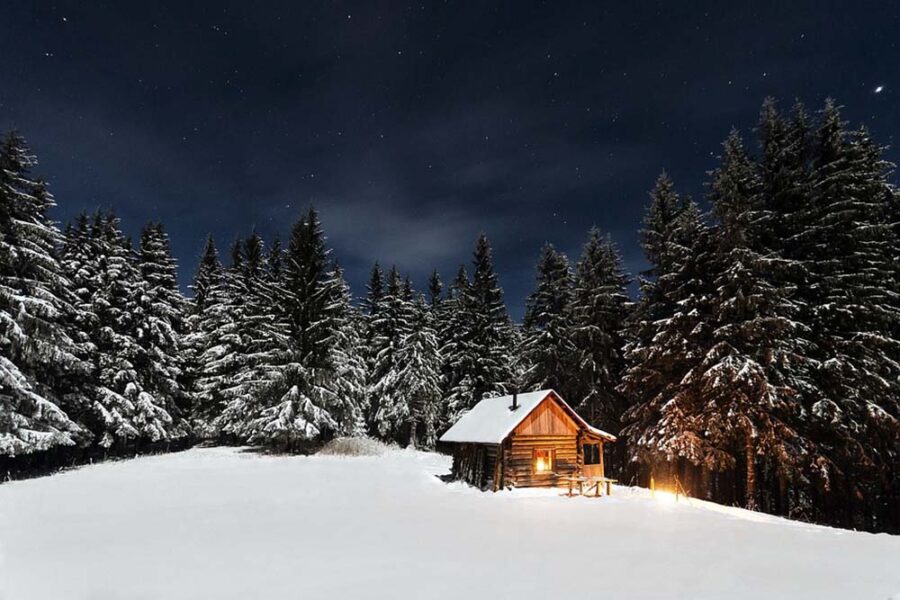
If you end up in a wilderness situation that needs a long-term shelter, you have to make sure you treat your cover correctly and think of it as your home, every part of it needs maintenance. You should check if the bones of your shelter are sturdy and stable every day. Then you’ll need to look at the leaves and vegetation that you used to weatherproof your structure because that’s what will take most of the beating from the elements. Last but not least, find something that will keep you off the ground.
How to Heat a Survival Shelter?
As we all know, everyone needs heat to survive, but if you don’t want to have a fire pit inside of a primitive cover made of sticks and dry vegetation, there is another way to keep yourself warm with far less danger. Dig a small hall inside your shelter, big enough to fit the rock you have chosen to use. Pick a stone from a dry location because if it’s wet, there is a possibility of it exploding.
After you’ve got the right one and it fits in your hall, put it in the fire for an hour or so until it turns red, then grab your shovel and carry it to the hole you made. The radiant heat from the stone will last hours and keep you warm while you sleep.
What is the best survival shelter?
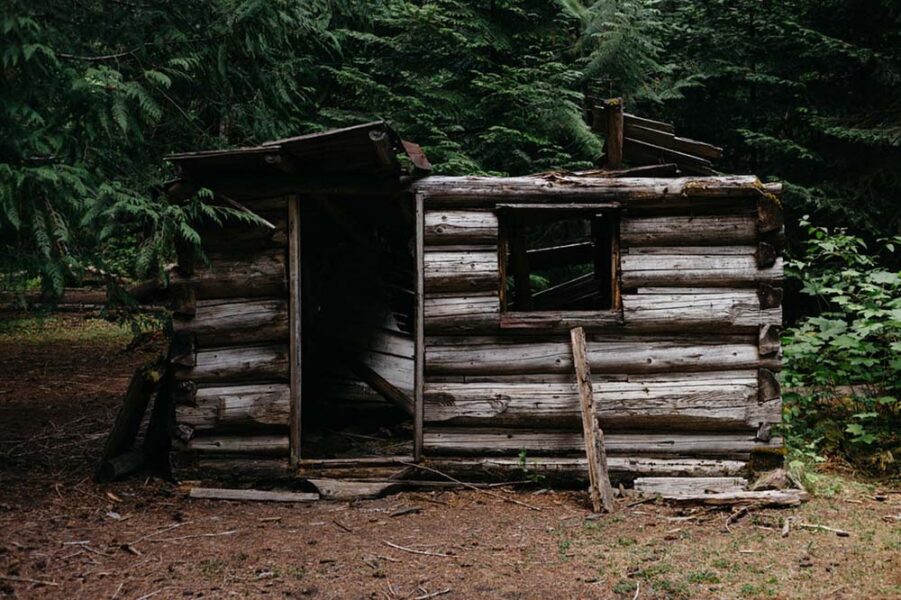
That is a question with multiple answers because it depends on the situation you are in and the area. Honestly, your best option will be to find a cave opening, so you don’t have to build anything, and you won’t have to worry about your shelter withstanding all the elements. But since you won’t always get so lucky, your best option will be to build yourself a lean-to cover.
It won’t take long to do so, and if made properly, it can be a long-term survival shelter. Just put together a fire in front of it, so you stay warm and lots of vegetation on the top to cover the sticks so that you don’t have to think about rain and wind. If you have a tarp, you can use that to save yourself even more time and put it on instead of leaves to cover the top.
How do you waterproof shelter in the wild?
If you end up building a long-term shelter, one of the most important things will be making it waterproof so that your stay is warm and comfortable. You have a couple of options to make your temporary home leak-free. The nature option will be to stack a bunch of debris, leaves, and vegetation to cover your shelter so no rain comes inside. Your best bet is to start with vines or branches.
After searching for leaves and bracken, you can pile up over the structure. If you have mud, wet earth, and leaves, use them on the top layer. The last layer should be branches laid on top, which will keep the wind from blowing away any of the roof debris.
Then you can use a tarp if you have one and put it on top, a cover for your shelter. Our advice for staying completely dry will be to make some flooring, so you’re not lying directly on the ground. Now that you know, it’s time to practice and build yourself a waterproof shelter! Even if it takes a few tries, you will get it after a few times and ensure you have the means to survive in the wilderness.
Final words
Learning how to build a long-term survival shelter is not as hard as it looks if you know how to do so. You’ll be in pretty good shape when you know how to build a few different ones and try to so you can practice your new skill set. Don’t forget that you need to choose the correct place and position your cover close to a water source. A well-made structure can make a temporary home a long-term shelter that can withstand the elements and keep you safe and dry.
If there is something you would like to share regarding the subject, we’ll be happy to hear you out, and if there are any more questions that need to be answered, drop them in the comments below.


